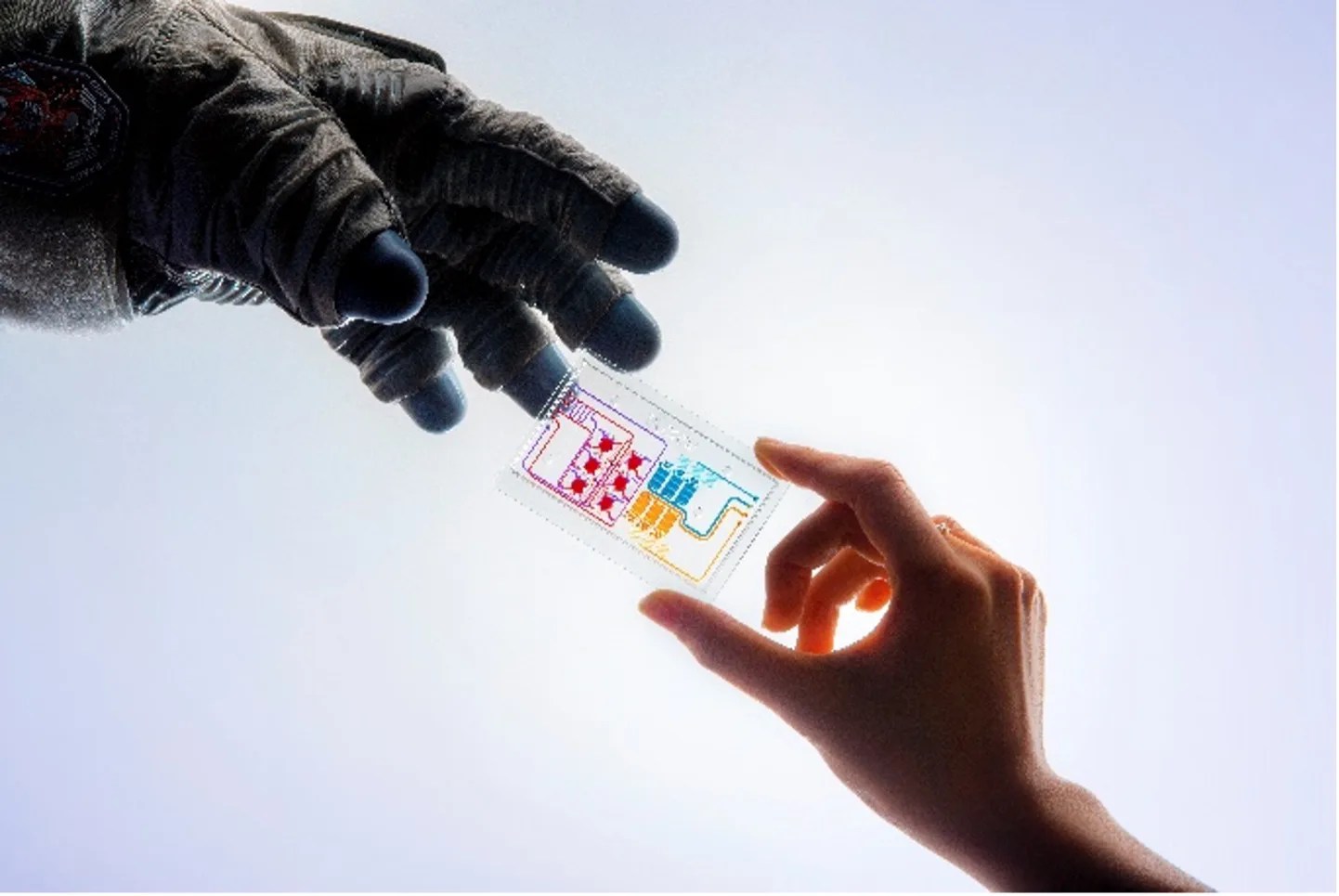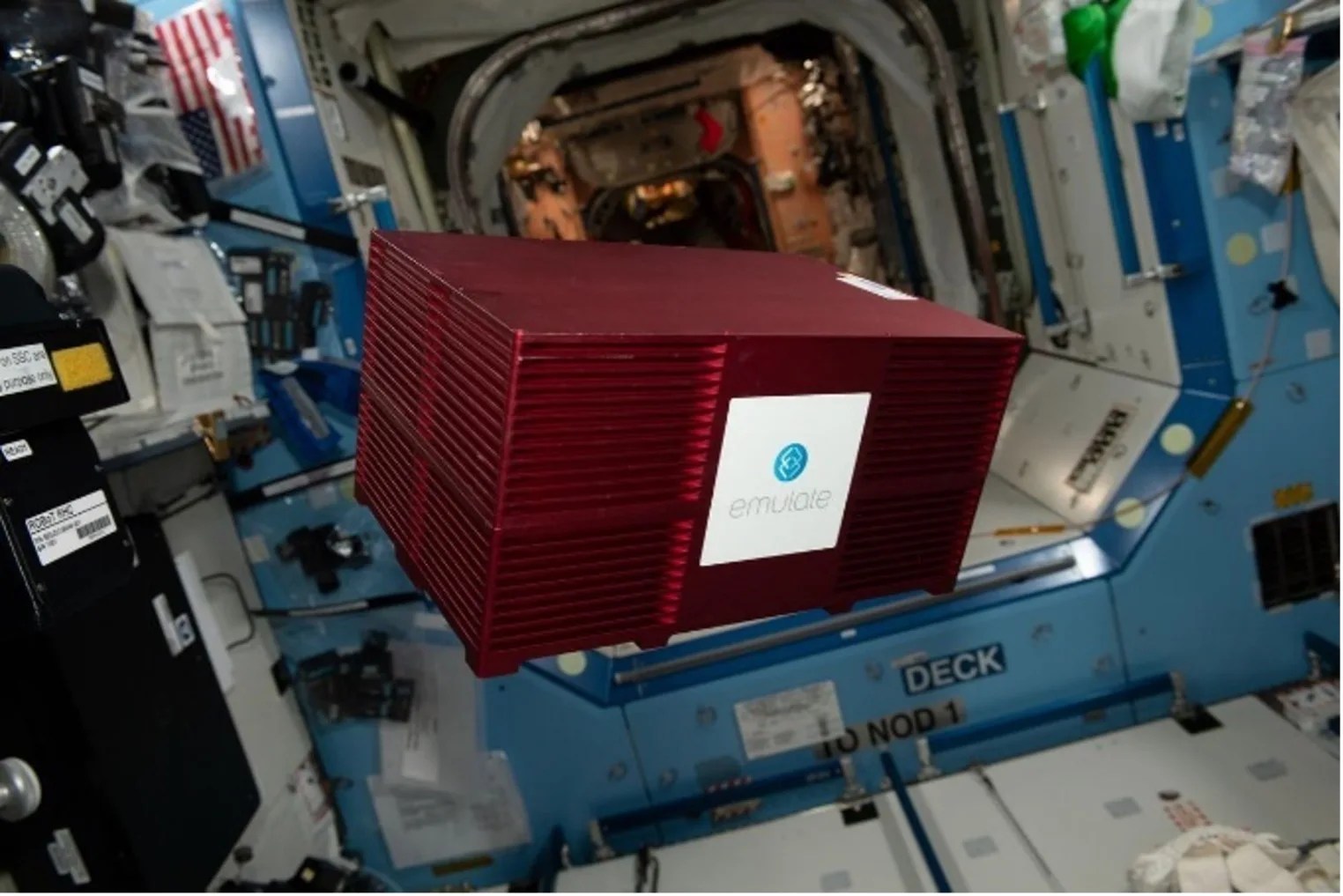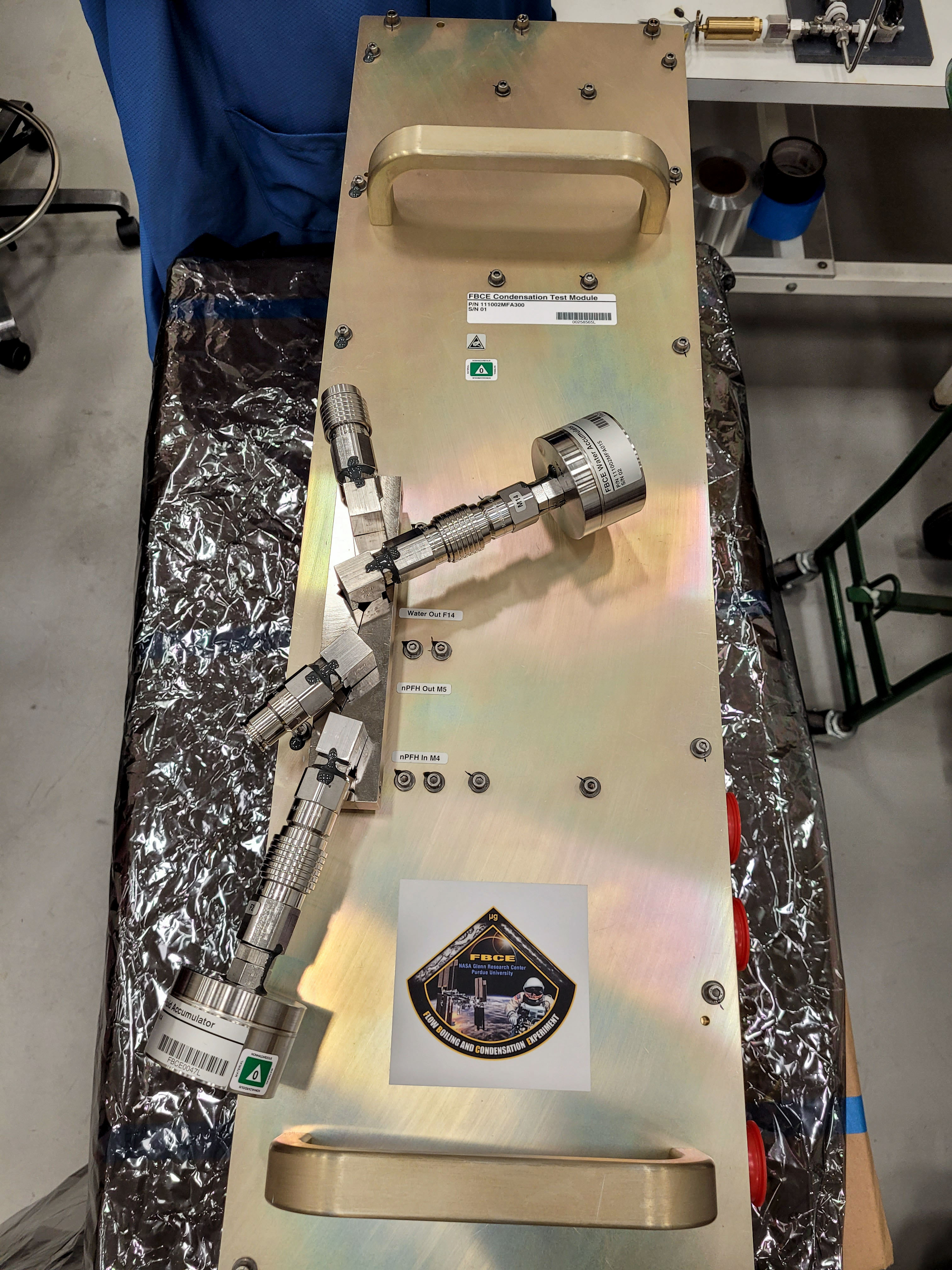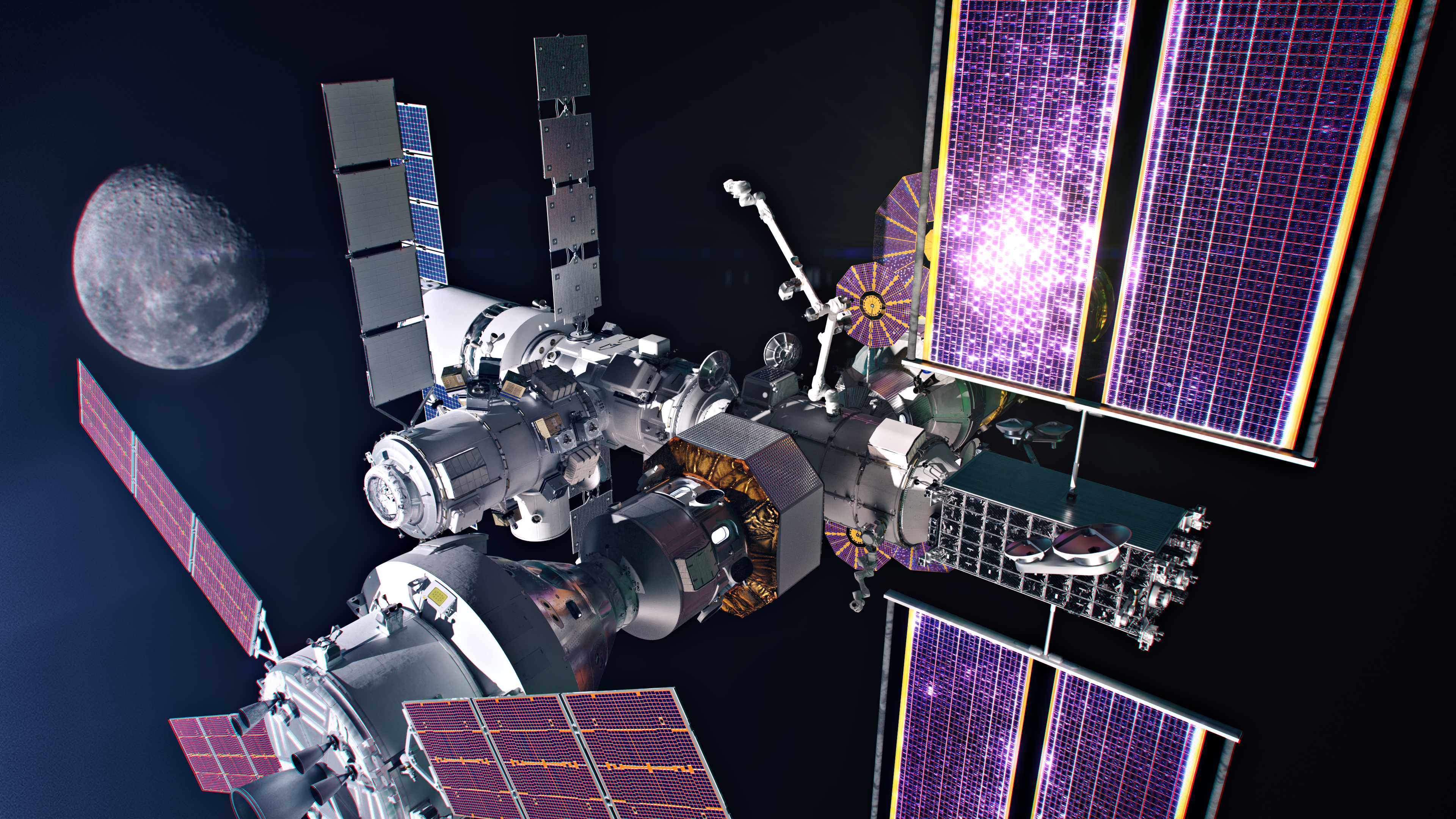10 min read
Extending the longevity of tissue chips used for biomedical research could contribute to unprecedented advancements in predictive medicine and personalized healthcare.
Innovative models, such as 3D Tissue Chips and microphysiological systems (MPS), enable researchers to study how a patient might respond to a treatment without the need for the patient to receive it directly. Today, these chips only ‘live' for approximately one month, limiting researchers’ ability to track the longer-term effects of treatments on tissues. For example, an individual’s initial response to a drug might be favorable, but further study could reveal other unexpected or detrimental effects with prolonged usage.
Longer-lived tissue chips could benefit biomedical research in many ways: from reducing the reliance on human and animal testing to predicting drug failures to personalizing medical kits for astronauts in space. To help make this a reality, multiple agencies came together to collectively use their resources to improve our understanding of Earth-based disease and the biological impacts of spaceflight.
FDA remains deeply engaged in identifying and fostering strategies that can bring alternative testing methods such as microphysiological systems to FDA for integration into the review process. Collaboration with our partners in the public and private sectors has been critical to advancing our efforts in this area, particularly with respect to medical countermeasures.”

Rear Admiral Denise Hinton
FDA CHIEF SCIENTIST
Partnering with other agencies enables us to do things together that we can’t accomplish alone. It helps accelerate our research processes and conduct our research better, faster, and more cost-effectively."

Dr. Joni Rutter
Acting Director, National Center for Advancing Translational Sciences (NIH/NCATS)
Microphysiological systems (MPS) and 3D tissue chips replicate organ-specific cells—such as heart, pancreatic, liver, and others—on small devices, roughly the size of a USB drive. Researchers and clinicians use these tissue chips to test and observe how cells respond to various environmental factors (such as radiation and microgravity) and treatments (including medications and chemotherapy).


A collaboration among NASA, the Food and Drug Administration (FDA), National Institutes of Health (NIH), and the HHS Office of the Assistant Secretary for Preparedness and Response’s Biomedical Advanced Research and Development Authority (BARDA) aims to extend the longevity of 3D tissue chips and MPSs to a minimum of six months.
The extended chip lifespan would enable researchers to assess the effects of acute and chronic stressors over longer periods of time. Results from longer-duration studies could be used to better understand: 1) disease models, 2) drug development, 3) clinical trial design, 4) chemical and environmental exposures and countermeasures, and 5) physiological changes due to the spaceflight environment.
Spearheaded by NASA’s Biological and Physical Sciences Division, the agencies have come together to further this important area of research that will benefit human health, both on Earth and in space. The International Space Station’s National Laboratory (also known as CASIS) frequently works with commercial industry, academia, and international organizations to conduct investigations aboard the space station in this and many other areas of research as well.
Partnering has allowed the agencies to maximize the government’s investment in this technology area, reduce duplicative research, and accelerate technical advances toward understanding diseases and ways to treat them.
“Interagency collaboration has enabled the FDA to work more efficiently by leveraging resources, expertise, and approaches through new and established partnerships to address important regulatory science gaps,” says Captain Tracy MacGill, director of Medical Countermeasures (MCM) Regulatory Science with the FDA. Adds Dr. Shannon Loelius, biologist with BARDA, “We can leverage subject matter expertise across United States’ government agencies, coordinate efforts across all program awards, and maintain situational awareness of partner interests and development. The collaboration will enable streamlined development with minimal redundancies.”
Representatives from the agencies offered their perspectives about how extending the longevity of tissue chips might contribute to scientific advancements in their organizations:
“We expect that extending the lifespan of the microphysiological systems will provide more relevant and predictive models. For example, this will enable us to look at the effects of drugs or other FDA-regulated products over a longer duration in both normal cells and those with acute and chronic diseases. The research has the potential to provide a wider window into safety and efficacy of a variety of medical products.”
“BARDA anticipates that the development of extended longevity microphysiological systems with integrated, non-invasive sampling will enable quicker development of medical countermeasures against chemical, biological, radiological, and nuclear threats, as well as pandemic influenza and emerging infectious diseases, and identification of relevant biomarkers. The MPS could, in theory, be used to screen medical countermeasures to treat specific pathologies associated with acute radiation syndrome, such as endothelial dysfunction. Extended longevity MPS could be used to understand delayed effects of ARS on human systems, as well as any longer-term effects of therapeutics.”
“NIH and NASA are together exploring how cutting-edge biomedical research can benefit human health here on Earth as well as address some of the challenges of deep-space exploration. Extending culture life of tissue chips enables the ability to look at chronic issues over time and anticipate the key challenges of longer-term exposure. It has the potential to transform patient care where clinicians can predict an individual’s response to treatments and develop a personalized approach to medicine. Our objective is to increase focus on automation to enable development of systems that can run without the need for specialized expertise and broaden the utility of using tissue chips to a wider application in a variety of experimental settings and environments.”
“In keeping with the 2017 Memorandum of Understanding between NASA and the NIH, the NIAID Radiation and Nuclear Countermeasures Program is eager to coordinate research activities with the NASA Biological and Physical Sciences Division on studies using long-term 3D tissue and microphysiological systems to better understand the impact of radiation exposures (both terrestrial and space-based) on human tissues. Through this joint funding opportunity, we are excited to explore adaptation of this technology for identification of biomarkers and development of treatments for acute, unintended radiation exposures. This initiative will undoubtedly conserve animal resources and bridge gaps in knowledge of human radiation responses that are not readily addressed through existing models.”
“NIH supports tissue chips research to address the limitations of traditional cell culture and animal models that fail to adequately replicate human tissue physiology, structure, and function. NCI enthusiastically partnered with NASA in this effort to enhance tissue chips longevity so these model systems could better address basic research questions in cancer biology and produce more clinically relevant results for improved cancer screening, diagnosis, drug development, and treatment.”
“Extending the longevity of 3D tissues and microphysiological systems will allow us to understand the effects of spaceflight on human organs and systems, which is critical as we plan for sustainable presence on the lunar surface and our journey to Mars. Given the limited space aboard spaceflight vehicles, crew will need to be selective about the supplies they bring. Knowing ahead of time how an astronaut will respond to a medication ensures that the right supplies are included in a medical kit and minimizes the risks of unexpected adverse effects.”
Extending the longevity of microphysiological systems could lead to transformative advancements in science and medicine, both on Earth and in space. Modeling human tissues on chips and studying them for longer durations could enable researchers to:
- Anticipate the key challenges of longer-term exposure to stressors and treatments.
- Employ alternative methods to human and animal testing.
- Ensure the health of astronauts during deep space missions.
- Develop medical countermeasures for chemical, biological, radiological, nuclear agents, pandemic influenza, and emerging infectious diseases, like COVID-19.
Proposals for the solicitation to extend the life of tissue chips were accepted through September 2021. Selections are expected to be announced in early 2022.
- The National Center for Advancing Translational Sciences (NCATS) at the National Institutes of Health (NIH) strives to develop innovations to reduce, remove or bypass costly and time-consuming bottlenecks in the translational research pipeline in an effort to speed the delivery of new drugs, diagnostics, and medical devices to patients.
- The National Cancer Institute at the National Institutes of Health (NIH) leads, conducts, and supports cancer research across the nation to advance scientific knowledge and help all people live longer, healthier lives.
- The National Institute of Allergy and Infectious Diseases (NIAID) at the National Institutes of Health (NIH) conducts and supports basic and applied research to better understand, treat, and ultimately prevent infectious, immunologic, and allergic diseases; and also serves as the lead Institute within NIH for the development of medical countermeasures to diagnose/mitigate/treat radiation injuries. Within NIAID, the Division of Allergy, Immunology, and Transplantation (DAIT) supports basic and clinical research
- exploring how the immune system functions during health and under abnormal conditions, which includes allergic, autoimmune, and infectious diseases; and abnormalities induced by exposure to radiation and toxins; to improve the understanding of the causes of immunologic diseases and to develop better diagnostic, treatment, and prevention strategies. The Radiation and Nuclear Countermeasures Program (RNCP) is tasked with developing a robust research program to accelerate the development and deployment of new medical countermeasures and biodosimetry approaches.
- Biomedical Advanced Research and Development Authority (BARDA), part of the U.S. Department of Health and Human Services (HHS) Office of the Assistant Secretary
- for Preparedness and Response (ASPR), was established to aid in securing our nation from chemical, biological, radiological, and nuclear (CBRN) threats, as well as from pandemic influenza and emerging infectious diseases (EID). BARDA supports the transition of medical countermeasures such as vaccines, drugs, and diagnostics from research through advanced development towards consideration for approval by the FDA and inclusion into the Strategic National Stockpile.
- The Food and Drug Administration (FDA) plays a critical role in protecting the United States from chemical, biological, radiological, nuclear, and emerging infectious disease threats. FDA ensures that medical countermeasures (MCMs)—including drugs, vaccines, and diagnostic tests—to counter these threats are safe, effective, and secure. FDA has had a long-standing commitment to promote the development and use of new technologies to better predict human and animal responses to substances relevant to its regulatory mission. FDA has established a cross-agency Alternative Methods Working Group, which is developing a targeted strategy for moving toward the use of alternative methods for regulatory testing. FDA has also launched nimble funding mechanisms like the Advancing Regulatory Science Broad Agency Announcement to support novel approaches to evaluating FDA-regulated products and help advance new technologies, like human organs-on-chips.
- NASA’s Biological and Physical Sciences Division’s Space Biology Program’s main research objective is to build a better understanding of how spaceflight affects living systems in spacecraft, such as the International Space Station (ISS), or in ground-based experiments, and to prepare for future human exploration missions far from Earth.
- NASA’s Human Research Program (HRP) is focused on investigating and mitigating the highest risks to human health and performance in support of NASA exploration missions. HRP conducts research, develops countermeasures, and undertakes technology development to inform and support compliance with NASA's health, medical, human performance, and environmental standards.
Human Organ Chips for Radiation Countermeasure Development - Scientists are developing models of radiation damage in lung, gut and bone marrow organs-on-chips and using these
models to test MCMs to treat such damage.
The BARDA Broad Agency Announcement (BAA; BAA-18-100-SOL-00003), Area of Interest #4: Radiological/Nuclear Threat Medical Countermeasures, section “4.4 Enabling Technologies” supports relevant MPS technology (2020)






